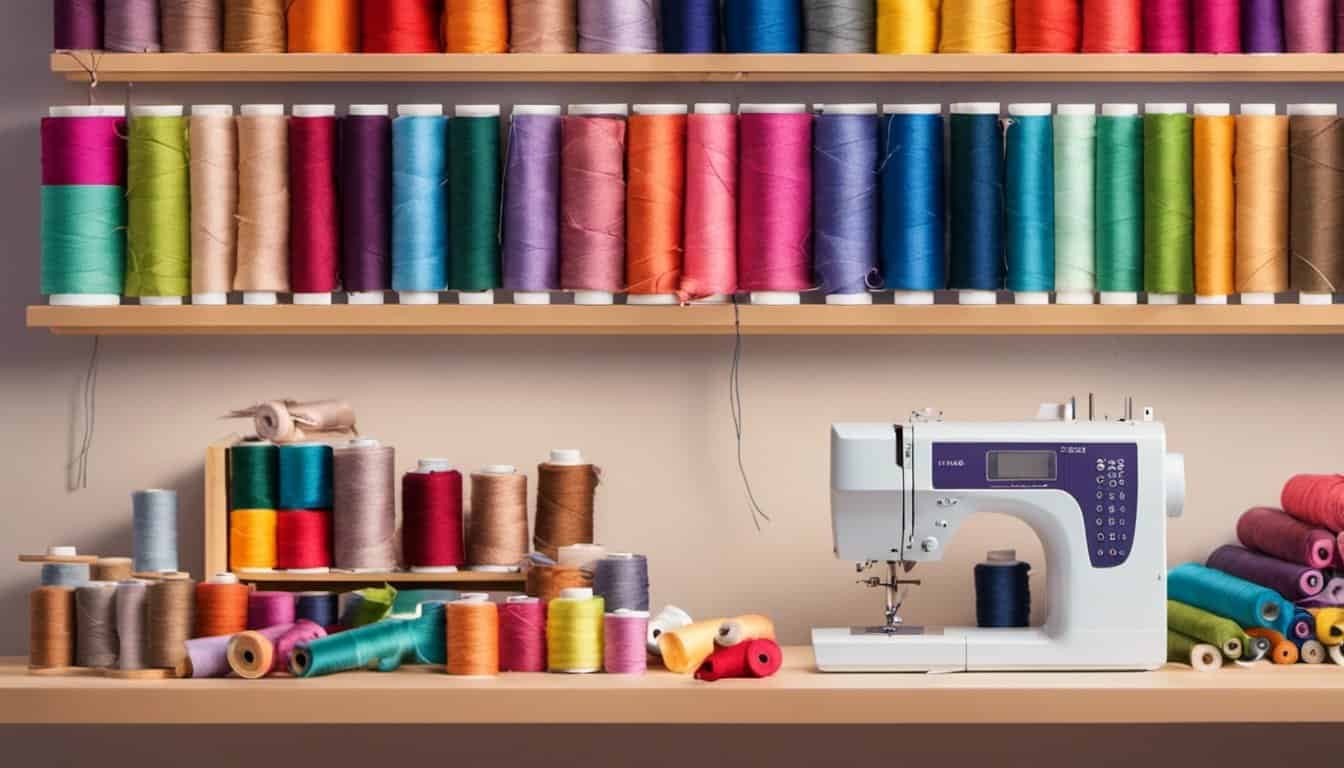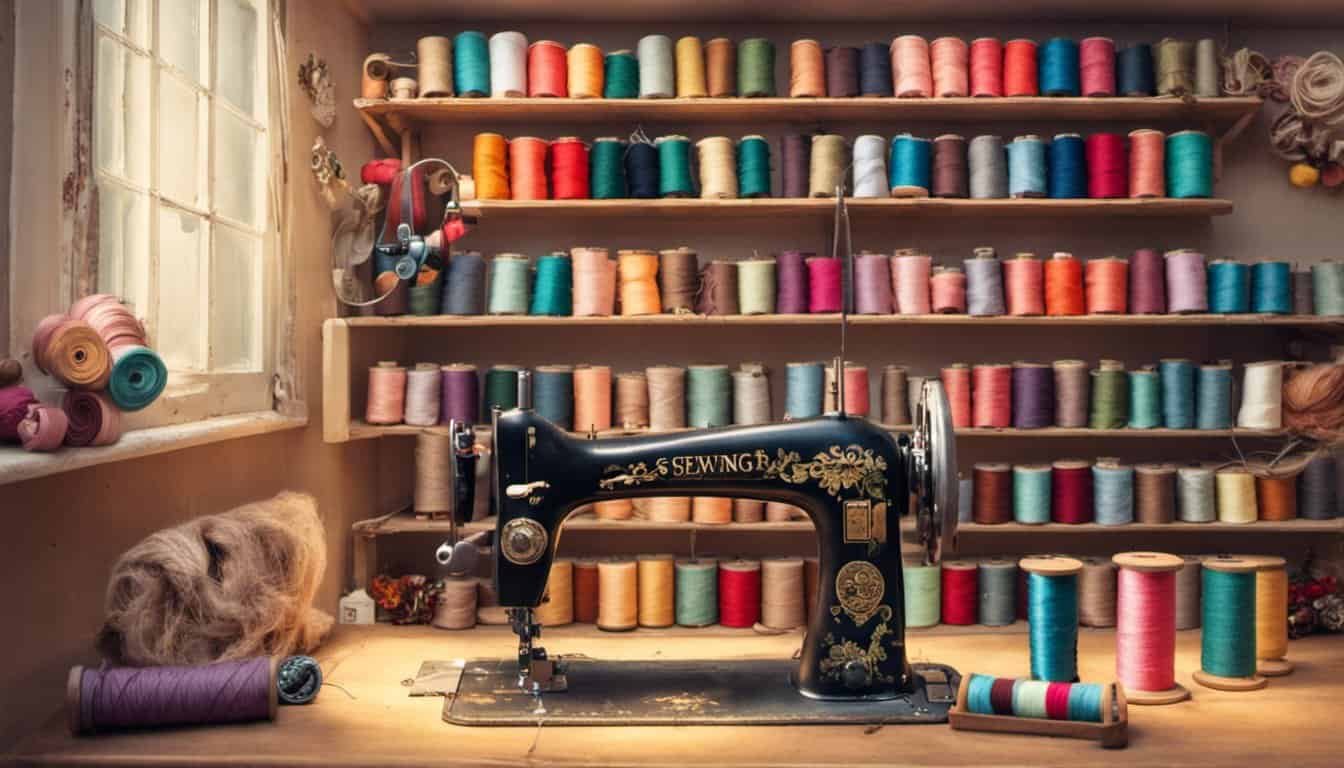Are you struggling to get the perfect stitch on your sewing machine? One of the most common culprits is incorrect tension. But how do you know if your sewing machine tension is right? In this article, we’ll explore some simple ways to determine if your tension is set correctly or if adjustments are needed. With a little knowledge and practice, you’ll be able to achieve beautifully balanced stitches every time.
When it comes to sewing, achieving the correct tension is essential for professional-looking results. If your sewing machine tension is too tight, you may notice puckering or gathering of the fabric. On the other hand, if the tension is too loose, your stitches may appear sloppy or even unravel. By understanding the signs of incorrect tension, you’ll be able to troubleshoot and make the necessary adjustments to achieve the perfect balance.
So, how can you tell if your sewing machine tension is correct? There are a few simple tests you can perform. First, examine the stitches on both sides of the fabric. Ideally, the top and bottom threads should interlock smoothly in the middle of the fabric. If one thread is more dominant or if the stitches look uneven, it’s a sign that the tension needs to be adjusted. Don’t worry – we’ll walk you through the steps to fix it.
Importance of Sewing Machine Tension
When it comes to sewing, the correct tension on your sewing machine is crucial for achieving professional and flawless results. Whether you are sewing garments, quilts, or crafts, having the right tension ensures that your stitches are even, secure, and perfectly balanced. Let’s dive into why sewing machine tension is so important:
Ensures Proper Fabric Handling
Having the correct tension on your sewing machine ensures that the fabric is handled properly as it moves through the machine. If the tension is too tight, the fabric can become puckered or gathered, ruining the overall look and fit of your project. On the other hand, if the tension is too loose, you may end up with sloppy, loopy stitches that can easily unravel.
Promotes Even Stitches
Proper tension is the key to achieving even stitches on both sides of the fabric. When the tension is set correctly, the top and bobbin threads intertwine smoothly in the middle of the fabric, creating consistent and balanced stitches. This is especially important when working on intricate patterns or decorative stitches, as it ensures a neat and uniform finish.
Prevents Thread Breakage
Incorrect tension can put unnecessary strain on the threads, leading to frequent thread breakage. If the tension is too tight, the threads may be stretched too much, increasing the likelihood of them snapping under pressure. On the other hand, if the tension is too loose, the threads may not be securely held in place, causing them to break as you sew.
Provides Versatility
By understanding and adjusting your sewing machine’s tension settings, you open up a world of possibilities. Different fabrics, threads, and stitching techniques may require slight adjustments to the tension to achieve the desired results. Having the ability to control and adapt the tension based on your project allows you to successfully tackle a wide range of sewing endeavors with confidence.
Remember, achieving the perfect tension may require some trial and error. Take the time to practice on scrap fabric and make small adjustments, finding the sweet spot that gives you flawless stitches every time. With a little patience and fine-tuning, you’ll be well on your way to mastering the art of sewing machine tension.
Understanding Sewing Machine Tension
When it comes to sewing, embroidery, knitting, and all things crafts, understanding your sewing machine’s tension is crucial. The tension settings ensure that your stitches are neat, even, and secure. In this section, we’ll delve into the intricacies of sewing machine tension and provide you with valuable insights on how to tell if your tension is set correctly.
What is Sewing Machine Tension?
Sewing machine tension refers to the balance between the upper thread (the one coming from the spool) and the lower thread (the one from the bobbin). It’s essential to achieve the right balance between these two threads to produce the perfect stitch. Too tight, and you risk puckering the fabric; too loose, and your stitches may appear sloppy and loose.
Signs of Correct Tension
Want to know if your sewing machine’s tension is spot-on? Look for these telltale signs:

- Balanced Stitches: Take a close look at your stitches. Are they evenly formed on both sides of the fabric? If yes, congratulations! Your tension is likely set correctly.
- Neat, Straight Seams: Well-set tension ensures that your seams are straight and without any puckering or gathering of the fabric.
- No Breakage or Snapping: When the tension is right, the thread flows smoothly through the machine without any breaking or snapping.
Performing a Tension Test
If you’re unsure about your tension settings, here’s a quick test you can try:
- Thread the Machine: Start by threading the machine correctly, both the upper thread and the bobbin.
- Choose a Test Fabric: Pick a scrap piece of fabric similar to the one you’ll be working with.
- Stitch a Sample: Sew a line of stitches on the fabric. Examine the stitches and see how they look.
- Adjust the Tension: If the stitches are too loose (the upper thread is visible on the bottom side) or too tight (the bobbin thread is visible on the upper side), make small adjustments to the tension dial and test again. Repeat until you achieve the desired stitch appearance.
Understanding sewing machine tension is the key to achieving professional-looking results. By learning to recognize the signs of correct tension and performing a simple tension test, you’ll be well-equipped to tackle any sewing project with confidence. So, take the time to get to
Signs of Incorrect Tension
When it comes to sewing, the tension in your sewing machine is a crucial factor that can make or break your project. While we have discussed the signs of correct tension, it’s equally important to recognize the signs of incorrect tension. Here are a few indicators to look out for:
Uneven Stitches
One telltale sign of incorrect tension is when your stitches appear uneven. If the tension is too tight, the upper thread will pull the lower thread too prominently, causing the stitches to pucker or gather. On the other hand, if the tension is too loose, the lower thread will pull the upper thread, resulting in loose or sloppy stitches.
Fabric Puckering
« Unveiling the Unbeatable Sewing Machines: Meet the Game-Changing Brands That Outlast the Rest
Discover the Mind-Blowing Secrets of Sewing Machine Feet: The Ultimate Guide to Achieving Pro-Level Results »
Another indicator of incorrect tension is fabric puckering or gathering. This occurs when the tension is too tight, causing the fabric to be pulled excessively while stitching. You may notice the fabric becoming distorted or wrinkling around the stitches.
Thread Breakage
Incorrect tension can also lead to frequent thread breakage. If the tension is too tight, the thread may not glide smoothly through the fabric, resulting in excessive strain and eventual breakage. Conversely, if the tension is too loose, the thread may not have enough tension to hold the stitches in place, leading to it easily snapping.
Skipped Stitches
When the tension is too loose, you may experience skipped stitches. This means that the needle occasionally misses a stitch, leaving gaps or spaces in the material. It can also cause the fabric to pull away from the stitch line, compromising the overall strength and integrity of your project.
Improper Fabric Handling
Incorrect tension can also affect how the fabric is handled while sewing. If the tension is too tight, the fabric may be pulled, causing it to bunch up or distort. Conversely, if the tension is too loose, the fabric may not be adequately held in place, resulting in uneven feeding and difficulty in controlling the fabric.
By understanding these signs of incorrect tension, you can quickly identify if adjustments need to be made to your sewing machine. Remember, achieving the right tension is key to achieving professional-looking stitches and ensuring the success of your sewing projects.

Adjusting Upper Thread Tension
Adjusting the upper thread tension on your sewing machine is a crucial step in achieving flawless stitches. When the tension is too tight or too loose, it can result in unsightly puckering, skipped stitches, or even thread breakage. However, with a bit of knowledge and practice, you can easily make the necessary adjustments. Here are a few steps to help you ensure that your upper thread tension is set correctly.
1. Understand the tension dial: Most sewing machines have a tension dial that ranges from low to high. If your stitches appear too tight or too loose, you will need to adjust this dial accordingly.
2. Start with the default setting: Begin by setting your machine’s tension dial to the recommended default setting. This is usually a mid-range value and may vary depending on the fabric you’re using.
3. Test your stitches: Stitch a few lines on a scrap piece of fabric using different tension settings. Take note of how the stitches look using different tension levels. If the stitches are too tight (causing the fabric to pucker) or too loose (resulting in sloppy stitches), it’s time to make some adjustments.
4. Make small adjustments: When tweaking the tension, remember that small adjustments can make a big difference. Turn the tension dial gradually, either clockwise or counterclockwise, to achieve the desired results.

5. Test and repeat: After each adjustment, test your stitches on a scrap fabric again. Keep making small tweaks until you achieve even stitches with no puckering or loose threads.
6. Consider the fabric: Keep in mind that different fabrics require different tension settings. Delicate or lightweight fabrics may need a lower tension, while thicker or heavy-duty fabrics may require a higher tension setting. Adjust accordingly based on the fabric you are working with.
Remember, practicing and experimenting with tension settings is key to mastering this skill. With time, you’ll develop an understanding of how your sewing machine behaves and be able to adjust the tension with ease. So keep stitching, keep practicing, and you’ll soon achieve professional-looking results every time!
Adjusting Bobbin Tension
Adjusting the bobbin tension is another crucial step in ensuring that your sewing machine is operating at its best. In this section, we’ll walk you through the process so you can achieve perfect tension with ease. Remember, proper tension is the key to achieving professional-looking stitches and avoiding frustrating sewing mishaps.
1. Locate the bobbin tension screw. The bobbin tension screw is usually located on the bobbin case near the spring. Consult your sewing machine manual if you’re unsure about the exact location.

2. Test the current bobbin tension. Start by threading your sewing machine and creating a simple test stitch on a scrap piece of fabric. Examine the stitch carefully. If the bobbin thread is pulling to the top side of the fabric, the tension is too loose. On the other hand, if the top thread is pulling to the underside, the tension is too tight.
3. Make small adjustments. Use a small screwdriver to make slight adjustments to the bobbin tension screw. Turn it clockwise to tighten the tension or counterclockwise to loosen it. Make very tiny changes, about an eighth of a turn at a time, and test the stitch after each adjustment.
4. Test again and repeat if necessary. Continue making small adjustments and testing the stitch until you achieve a perfect balance between the top and bobbin threads. Remember, patience is key during this process. Take your time, as rushing can lead to frustration and inaccurate results.
5. Consider the thickness of your fabric. Keep in mind that different fabrics may require different bobbin tension settings. Thicker fabrics may need a slightly looser tension to allow for smoother stitching, while lighter fabrics may require a slightly tighter tension to prevent the bobbin thread from showing on the surface.
By following these steps, you’ll be able to adjust the bobbin tension to match the upper thread tension perfectly. This harmony between the two tensions will result in even, well-balanced stitches and beautiful sewing projects.

Conclusion
Now that you understand the importance of correct tension in your sewing machine, you can confidently determine if your machine is set correctly. Incorrect tension can lead to fabric puckering, sloppy stitches, thread breakage, and improper fabric handling. On the other hand, proper tension ensures even stitches, prevents thread breakage, and provides versatility in your sewing projects.
By recognizing the signs of incorrect tension, such as uneven stitches, fabric puckering, thread breakage, skipped stitches, and improper fabric handling, you can quickly identify if adjustments need to be made. Adjusting the upper thread tension involves understanding the tension dial, starting with the default setting, testing stitches, making small adjustments, considering the fabric, and practicing.
Don’t forget about the bobbin tension! Adjusting the bobbin tension is equally important for achieving a perfect balance between the top and bobbin threads. Locate the bobbin tension screw, test the current tension, make small adjustments, consider the thickness of the fabric, and achieve the desired balance.
Remember, with proper tension, your sewing projects will turn out beautifully every time. Happy sewing!








